After the run to the recycling center, I made a quick stop to take a look at the landing. I knew already: a fine NNE wind, puffy cloud skies, these conditions called me to sail. 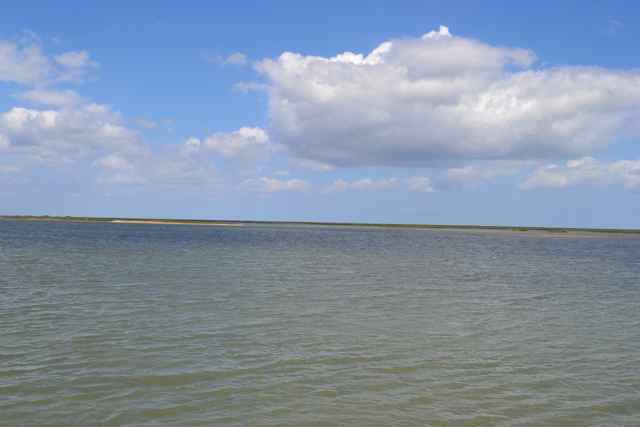 I had planned to avoid the Memorial Day bedlam on the waters, and stay ashore. But the atmosphere was inviting, courtesy of a weather system to the southeast: subtropical storm Beryl.
I had planned to avoid the Memorial Day bedlam on the waters, and stay ashore. But the atmosphere was inviting, courtesy of a weather system to the southeast: subtropical storm Beryl.
I planned to leave the Intracoastal Waterway (ICW) quickly and beat out Venning Creek to Bulls Bay. The high water and outgoing tide facilitated this effort.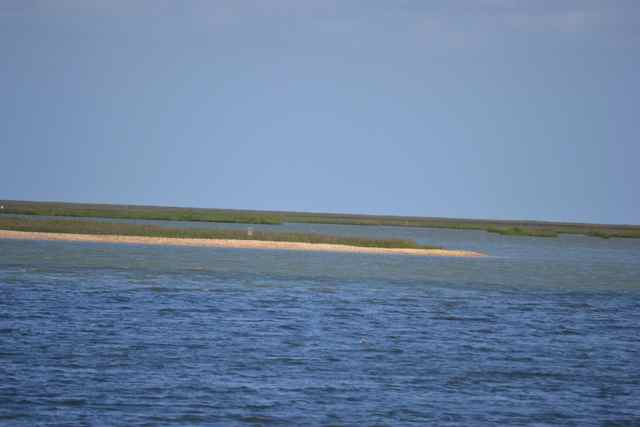 The wind had some flaws from the mainland disturbance, but out of the ICW there were no longer other boats to be concerned with. Ahead the creek bent to the east, away from the wind direction, the mainland, and the motor sounds from the ICW. We were released as we passed a great egret to starboard, and the new point of sail and wind gust shook Kingfisher loose onto a plane, shooting ahead toward the Bay in the distance.
The wind had some flaws from the mainland disturbance, but out of the ICW there were no longer other boats to be concerned with. Ahead the creek bent to the east, away from the wind direction, the mainland, and the motor sounds from the ICW. We were released as we passed a great egret to starboard, and the new point of sail and wind gust shook Kingfisher loose onto a plane, shooting ahead toward the Bay in the distance.
We didn’t plane the whole way, but after passing a dolphin off to port the wind seemed to pour out of the opening to Vanderhorst Creek, and send us speedily along into the Bay. The continued course bore directly to the sandy isle to the north of Bull Island; bearing off to an easier reach would put us on the Northeast Point. The reflections of an abnormally large number of boats on the Point confirmed it was Memorial Day weekend. The nearby waters were absent of boats as I bore off to parallel the Bay’s edge on my way to the southwest for Andersonville Creek. This was a run, occasionally surfing on a wave, but on a course where I risked a jibe. But the wind did not pick up as Beryl promised, and the conditions were far from wild. Beryl’s gale force winds would not arrive until the following day,.
I did enter the Bay with some anxiety, but for a different reason. The sail home seemed assured, as long as my sailing rig remained sound. Yet the mast was not sound; in fact it was riddled with holes, as if some aluminum-eating insect had made some inroads.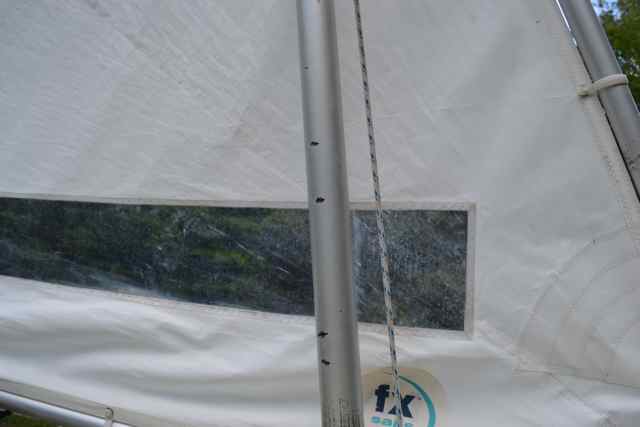
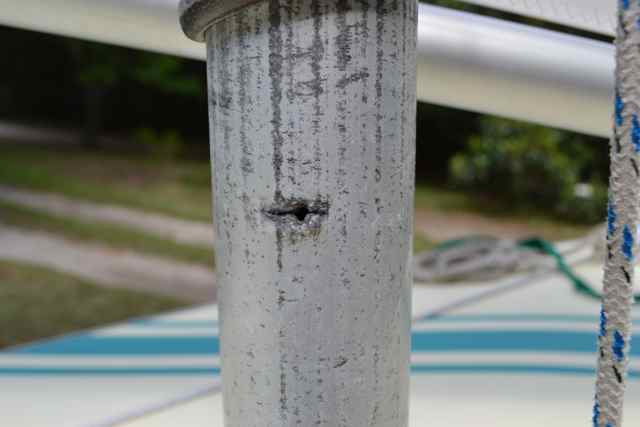 I had broken my previous mast close reaching in strong winds, and the failure of the mast had been sudden and explosive. Though the mainland and our landing was downwind, the gradually ebbing tide would make it a long paddle home. I was certainly OK with the winds staying moderate with a few decent gusts.
I had broken my previous mast close reaching in strong winds, and the failure of the mast had been sudden and explosive. Though the mainland and our landing was downwind, the gradually ebbing tide would make it a long paddle home. I was certainly OK with the winds staying moderate with a few decent gusts.
Avoiding the shoal waters stretching out from the northern side of the creek’s mouth, we jibed onto a course through the ebb tide induced waves into sheltered waters leading home. We would pass and be passed by several boats in this waterway through the marsh. 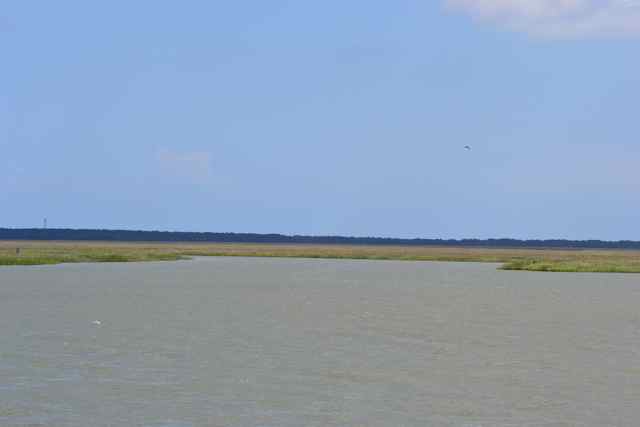 I reminisced on the final crossing of the ICW, noting the place where the mast breaking had taken place. I was happy I made it home with the stick still holding its own.
I reminisced on the final crossing of the ICW, noting the place where the mast breaking had taken place. I was happy I made it home with the stick still holding its own.

Like a breath of fresh sea air. I do miss Romain Retreat. Thanks, Bob
And we miss you too.